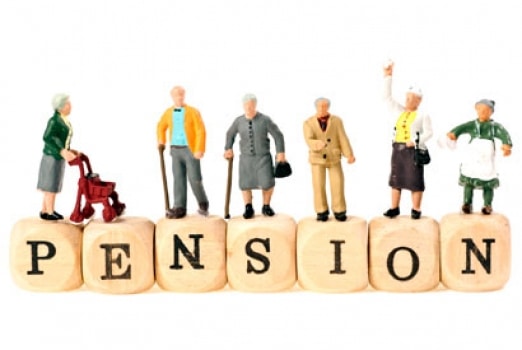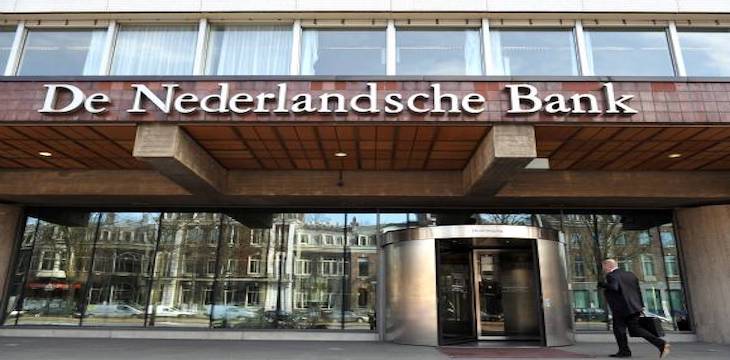A Guide to the Netherlands Pension System
If you are looking to invest as an expat or high-net-worth individual, which is what I specialize in, you can email me (advice@adamfayed.com) or WhatsApp (+44-7393-450-837).
This article is here for general informational purposes only, and the facts might have changed since we wrote it.
Introduction
In this article, we will talk about the Netherlands pension system, which has been famous for being one of the best across the globe. This is supported by the fact that poverty among the elderly in the Netherlands is almost insignificant.
This situation is mainly thanks to a good pension system in the country that features a government-funded pension scheme as well as a capital-funded plan. Overall, the system has very solid characteristics that highlights unity, risk-sharing, and effective cost control, among other things.
Let’s now inquire into the so-called three pillars of the Netherlands pension system.
General Old-Age Pensions Act (AOW)
Considered the first pillar of the Netherlands pension system, The AOW is a fundamental benefit that all residents of the Netherlands are entitled to receive once they hit the age requirement. It was established by the Dutch government in 1957.
The required age had been 65 for many years, however it has been increased by a few months each year in recent years.
According to existing proposals, the eligibility for AOW will be 67 years old by 2024, and after that, it will be determined by changes in longevity.
Residents in the country accumulate 2% of their AOW each year until they reach the required age. To accrue AOW, they are not required to currently or previously be employed in paid work. The AOW must be construed as a minimal level of basic provision, and in most situations, it is augmented by earnings from the other pillars.
The Ministry of Social Affairs and Employment oversees the administration of the AOW, which is a pay-as-you-go scheme supported by tax revenues rather than capital contributions from beneficiaries.
Occupational Pensions
The occupational pensions that most employees have accumulated over the course of their career make up the second pillar of the Netherlands pension system.
Both employers and employees contribute the amount specified in collective employment contracts to a pension fund with which the employer is tied to. This could be a pension fund for all companies in a specific sector, a fund that serves a single business, or a fund for a group employed in certain professions like physicians and physiotherapists.
Since this pillar is considered an employee benefit, the Minister of Social Affairs and Employment could mandate membership in an industry pension fund for the whole industry. Currently, majority of industry pension schemes now require participation.
Pension funds work on the principle of capital funding, whereby an employee and their employer accumulate pension benefits based on the contributions made and the profits generated by the pension fund over time as a result of the collective investment of such payments.
Pension accrual is subject to tax exemptions up to a certain ceiling depending on income.
Occupational pensions are not-for-profit and emphasize collectivity, requires involvement, and has effective management.

Individual Banking or Insurance Plans
Individual banking or insurance products that permit contributions to be made for the accrual of pension benefits with tax deductions up to a specific amount make up the third pillar of the Netherlands pension system.
This is crucial especially for those who haven’t managed to collect a pension under the second pillar due to reasons like their company isn’t connected to a pension fund, they don’t have a steady job, or they are self-employed.
How is the Netherlands Pension System Collective?
A participant accumulates a fixed portion of their annual pay toward a future pension under the collective occupational pension system in place in the Netherlands. For this, the pension fund receives the same payment from each participant. When determining the amount of this contribution, no consideration is given to individual variables such as age, gender, health, or income, which results to p groups of participants becoming more cohesive.
Despite the fact that a contribution made by a younger person will yield a return for a considerably longer period of time than capital contributed by an older person, both individuals rack up the same pension entitlements for the same payments.
The average payments made into the scheme will be replaced as part of the pension agreement by a degressive accrual scheme. This means that an older employee will accumulate less pension rights for a given contribution versus a younger coworker. All current pension agreements and all workers who are currently accumulating a pension will be impacted by the elimination of the average contribution framework.
According to the Dutch Cabinet, providing enough compensation to current participants is the only way to ensure a smooth shift to a new pension plan. The Cabinet said it will set up prerequisites and consistent structures before the transition that must consider the impacts of the change.
The pension agreement expects that all of the costs for executing the new plan will be equivalent to the benefits it will soon provide.
Netherlands Pension System: Eligibility
Having increased from 65 in 2018, the pension age in the Netherlands in 2020 is 66 and four months. By 2024, it should reach 67. Your Dutch pension is paid on a date based on your birthdate.
As you won’t be receiving your full state pension until you hit the legal pension age, you will normally need to pay for your early retirement. If you meet the requirements of the Dutch Social Insurance Bank, or SVB, you can potentially be qualified for interim benefits.
If you wish to work past the typical retirement age in order to accrue a larger pension, you are also free to do so.
Who is eligible to receive a Dutch state pension?
You contribute 2% into your state pension every year that you live or work in the Netherlands. Your contributions must total 50 years in order to earn the full pension. Your pension is determined by the number of years you did contribute if you don’t meet the 50-year target.
Your pension may be lowered if you relocate outside of the Netherlands. People between the ages of 15 and 65 may lose 2% of their pension for each year they are absent from the country.
Foreigners who work abroad in certain situations may still be eligible for Dutch pension benefits. Some expats decide to enroll in a voluntary state pension insurance program within a year of their international move.
Netherlands Pension System for Expats
Since the Netherlands is a European Union (EU) and Schengen Area member, citizens from the EU, the European Economic Area (EEA), or Switzerland are eligible for visa-free legal residency, employment, and retirement.
Citizens of EU/EEA and Switzerland may consolidate state pensions from other EEA member states toward their pension in the Netherlands. You merely have to inform the pension office in the nation in which you currently reside so it could determine a pro-rata pension stipend from each nation.
Through a number of bilateral social security agreements, the Netherlands is able to accept foreigners who wish to retire in the country and transfer their pension money there.
By eliminating double taxation, these agreements reduce the tax consequences of transferring pension funds.
A tool provided by the SVB allows you to determine whether you qualify to move your Dutch pension abroad if you reside outside of the Netherlands. Remigration benefits are sometimes available to residents leaving the Netherlands to help with living costs.
When trying to transfer your pension, you may be able to sidestep some tax consequences by using offshore options like the Qualifying Recognised Overseas Pension Scheme (QROPS) for UK pensions.
Pension transfers into QROPS may be possible for British expats moving abroad. By combining their pensions into a single plan, expats can organize their retirement money more easily and steer clear of currency fluctuations.
Although QROPS have many benefits, not all UK retirees are eligible for them, so be sure to check that too.
Netherlands Pension System: Who Oversees Pension Providers?

The Netherlands central bank De Nederlandsche Bank NV (DNB) and financial services regulatory authority Dutch Authority for the Financial Markets (AFM) are in charge of regulating pension funds and insurers in the country. Each of these bodies is responsible for a specific area.
De Nederlandsche Bank
A pension provider’s establishment needs prior go-ahead from the DNB, with the prerequisites inclusive of a board of trustees that is qualified and has enough financial resources. The DNB closely monitors the financial and managerial activities of the pension providers.
The Dutch Authority for the Financial Markets
Pension providers are required by law to give their stakeholders specific information. This duty entails stringent standards for content, comprehensibility, and timeliness. The AFM monitors whether pension providers are adhering to such specifications.
The AFM additionally oversees adherence to the duty of care. The purpose of this is to provide participants with investment option advice, as applicable.
Netherlands Pension System: Is Contribution Compulsory?
Participation in the Netherlands pension system is not required. Social partners are free to choose on their own if they want to offer a pension plan, although most employees have a pension plan through their employer.
If there is enough support, the government could also require a pension plan for a whole profession or sector. Consequently, under these situations, the employer is unable to decide on its own whether or not to offer a pension plan.
Insurance is purchased by industry pension funds with mandated contribution so that their plans could well be managed economically. A decent pension plan for every employee is also guaranteed by mandatory membership, which also inhibits salary-based conflict at a pension plan’s expense.
With required involvement, the government hopes to promote cooperation among its citizens. Employees can also switch jobs within the same sector without having an impact on their pensions. Companies that are exempt from the requirement to participate could include their pension plan in a corporate pension fund or lodge it with an insurer.
Netherlands Pension System: Pension Scheme Types
Defined Benefit Schemes
Pension plans come in a variety of forms, with defined benefit (DB) scheme being the most prevalent.
The size of the pension under this plan is based on both the number of years of service and the amount of contributions made. Almost all of these plans are dependent on average salary, and the pension that is accrued is always connected to the income within a specific year.
Conditional indexation is a common component of average pay structures. As a result, both those who are working and retirees will, in theory, have their pension benefits adjusted yearly to reflect changes in inflation or industry wage growth.
However, such adjustments may not be executed if the fund’s financial situation prevents it from doing so. Since the financial crisis in the late 2000s, many pension funds (even the biggest ones) have been unable to allot indexation.
Defined Contribution Schemes
Defined contribution (DC) schemes are another type of pension plan. In these plans, the pension amount is determined by the payments made while in the accrual phase and the yield on those contributions. Upon retirement, the capital must be transformed into a recurring benefit.
In theory, the employee is responsible for both the interest rate risk and the investment risk.
Both of the aforementioned approaches could also be combined in a pension plan. For instance, a person’s retirement pension could include both a DB element for salaries up to a specified level of income as well as a DC part for those salaries that are higher. The Netherlands has a low prevalence of individual DC schemes.
Collective Defined Contribution Schemes
There are hybrid plans in the Netherlands called Collective Defined Contribution (CDC) pension schemes, on top of DB and DC plans. As with a DB plan, the pension amount is determined by the employee’s pay as well as the number of years s/he has been with the business.
The contribution is set for a considerable length of time, though. If the contribution is later found to be insufficient, the pension benefit would be less than was originally planned. CDC plans combine the benefits of a collective pension system with a reduced risk for the employer of variable pension liabilities.
Pension Plan of ABP
Public sector organizations, particularly those in education, are required to have an ABP pension fund because it is the Netherlands’ pension fund for education and government staff.
Voluntary Pension
For businesses that do not comply with the standards of the mandated collective pension schemes, employers are allowed to voluntarily join a collective pension fund, which is also known as a generic pension fund.
The company has the option of providing benefits to its employees that are worth the same as pensions but are not pensions. For example, the firm could offer its employee an alternative benefit if s/he is already making contributions to his or her spouse’s pension and have no desire to participate in the company’s collective pension scheme.
Individual Private Pension
Employees and self-employed individuals who work in industries without public pension systems make up the bulk of those who use individual pension products or supplements.
Individuals can save money on taxes by buying and managing pension programs or assets like stocks, real estate, or life insurance on their own.

Netherlands Pension System: Setting Up a Plan for Employees
Let’s also discuss the part of businesses. Dutch employers, too, should be well equipped for requests and questions about pensions. A process that many multinational enterprises find to be onerous is putting in place a pension plan for their employees.
Check any applicable provisions of your collective labor agreement (CLA; CAO in Dutch). A collective labor agreement sets forth specified job specifications. In your sector, there probably is a contract that must be adhered to. If you are compelled to provide a specific form of pension, the contract will make that clear.
As an employer, the demographics of your workforce must be understood if you want to select the collective pension that is ideal for your business. The attitudes of your employees about retirement may be discernible based on factors like age, gender, lifestyle, and even country of origin.
You also must take into account that a pension plan that enables employees to add their spouse or children in the plan, for example, may be preferable to workers who are married and have families.
Employees of non-European origins often run into issues while moving their pension to their home nation. If your business employs foreign nationals, you might need to consider a pension plan that would be more versatile than what is generally provided.
Pensions may serve as a tool for attracting and retaining talent, so as an employer, you should always think of fresh approaches to inspire employees and keep an edge over the competition. Look into the branch market for the industry pension to see what competitors are offering to their employees. You’ll likely be better capable of retaining your present workforce and attracting top talent by raising the salary bar for your staff.
Certain Burdens on the Netherlands Pension System
The Dutch pension system has been running smoothly for many years and has proven that it can withstand upsets during difficult economic times.
The capital-funded pensions have indeed been able to deal with demographic trends, such as the aging population, more so than the purely pay-as-you-go systems that are used in some other countries. The AOW, meanwhile, has helped maintain basic provision during market crises.
However, issues have developed in the Netherlands over the past 10 years. The average Dutch person is living longer, necessitating a longer-term pension and thus a bigger pension than was initially considered.
Young people who pay into the Netherlands pension system are relatively steadily becoming fewer than older people. There are many more independent contractors who earn little to no pension under occupational pensions and individual banking or insurance products. As a result, they depend a lot on the AOW as a fundamental benefit.
In lieu of accounting regulations and backstop requirements, pension funds must maintain high levels of capital to fulfill their present and future liabilities.
Due to such changes, the Netherlands pension system has been under so much strain that a lot of pension funds have been unable to fulfill their long-term goal of indexing payments, and some funds have even had to cut pensions.
Notably, the public’s backing of the second pillar has suffered as a result of the fact that the Netherlands pension system was better a few years ago than they are now. This has caused a drop in confidence in the country’s pension system. Because pensions and accrual of funds take a long time, confidence and support are two very important things for the system’s stability.
Bear in mind that in such a situation, pensions should expand more rapidly in prosperous times and slump earlier during difficult times, moving in sync with overall trends in the market.
Risk Distribution Within the Netherlands Pension System
A significant number of pension plans in the Netherlands are defined benefit plans. All parties involved will gain if things go well, and in the event that the fund runs into financial woes, all parties involved will help with the recovery too. The employer, the workers, and the pensioners are all in this together.
Some things to note under risk sharing:
- There is room to raise the pension contribution, which will drive the employer’s wage expenses up and the employee’s net pay down. The employer is required to make an additional contribution to some corporate pension plans.
- Indexation may also be constrained. Since majority of pension plans specify that indexation is conditional, the ability of a pension fund’s financial situation to index pensions and accumulated benefits is a decision that the fund’s board should make every year.
- Then there is the radical approach of lowering pension payouts, which will be implemented to the extent required to recover the fund’s solvency. The coverage ratio, which indicates the ratio between both the assets and the obligations and is used to indicate the economic health of the pension fund, is a key factor in many pension plans and influences not only the amount of the payment but also the level of indexation.
Pained by financial indecision? Want to invest with Adam?

Adam is an internationally recognised author on financial matters with over 830million answer views on Quora, a widely sold book on Amazon, and a contributor on Forbes.


